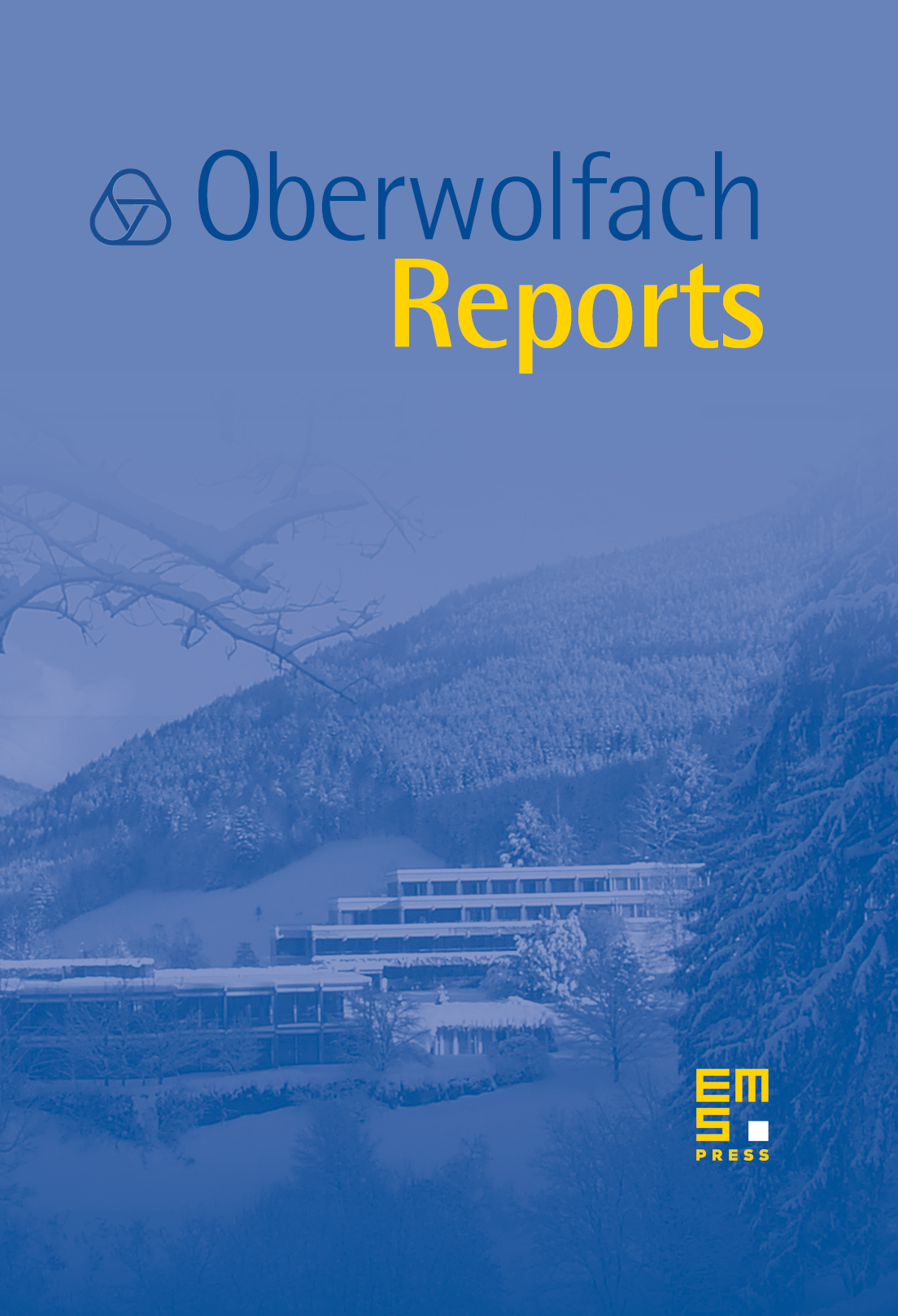String-Theorie und Geometrie
Nigel Hitchin
University of Oxford, UKAnton Kapustin
California Institute of Technology, Pasadena, USAWerner Nahm
Universität Bonn, Germany

Abstract
Of the three organizers of the conference N. Hitchin is a mathematician, A. Kapustin and W. Nahm are physicists. Ideas from physics, in particular from string theory and related areas had a profound influence on algebraic and differential geometry. Conversely, many developments in string theory use very recent mathematical results. There were 19 talks at the workshop, 12 by mathematicians and 7 by physicists, but in many cases an outside observer would have had difficulties to sort them out.
Quantum field theory often allows continuous interpolations between geometrical structures of topologically different manifolds. A particularly important example is mirror symmetry, where the complexified Kähler cone of one manifold corresponds to the moduli space of complex structures of the mirror manifold. Several talks explored geometrical and number theoretical aspects of this connection. Mirror symmetry can be understood in terms of torus fibrations and an isomorphism between the quantum field theories given by maps to a torus and to its dual (T-duality). The B-field of string theory can be described in terms of non-commutative geometry on the tori, and its effect on T-duality has been investigated. The quantum field theories which provide these dualities are supersymmetric conformally invariant quantum field theories in two dimensions. In mathematics, large parts of their structures have been axiomatised in the language of vertex operator algebras, but much remains to be done. A promising mathematical approach is provided by the chiral de Rham complex. This cohomology of this complex seems to be invariant under mirror symmetry, but its physical meaning is not yet clear. This led to many discussions between mathematicians and physicists. Indeed, the free time for discussions was at least as important as the lectures for learning the language of researchers with a different background and for making use of their ideas.
An area in which the common understanding is well advance is topological field theory. Here one has good axioms and many of the analytic problems of conformally invariant quantum field theories can be ignored. One can solve rather complex problems and one can make contact with new geometrical ideas, in particular generalised complex structures. The latter allow to interpolate between complex and symplectic geometry, which should become important for both physics and mathematics. To understand all of conformal field theory at a similar mathematical depth will take more time, but already now relations to mixed Hodge structures have given much insight. Eventually many so far intractable problems should be solvable by the use of quantum field theoretical ideas, for example the construction of the non-singular Ricci flat metrics on K3.
Perturbative string theory can be described in terms of conformal field theory, but the complete theory has more excitations than strings. Among them the best understood are the D-branes, many features of which can be understood in terms of boundary states in conformal field theory. Some of these branes are related to complex submanifolds, others to certain Lagrangian submanifolds, and their description involves twisted K-theory and derived categories.
The development of a common language between mathematicians and physicists is well under way, and the workshop has made a contribution which all participants found very stimulating. In Europe such meetings between mathematicians and string theorists are rare, so the workshop was particularly useful. Much of the time was reserved for informal discussions. On one evening there was a discussion on the relation between classical and quantum geometry. Weather predictions for the free afternoon had been bad, but finally the weather was splendid and the supply of Black Forest cake matched the demand.
Cite this article
Nigel Hitchin, Anton Kapustin, Werner Nahm, String-Theorie und Geometrie. Oberwolfach Rep. 1 (2004), no. 3, pp. 2015–2070
DOI 10.4171/OWR/2004/38